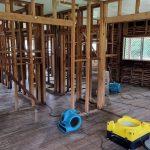When it comes to installing drywall, there are numerous techniques and strategies to consider. Whether you are upgrading a room or replacing existing drywall, having the right knowledge is essential. Before you hire a handyman, it’s crucial to understand several important factors. These include verifying the handyman’s licensing, understanding the cost of drywall installation, and choosing a qualified professional who meets your needs.
Essential Steps to Obtain a Handyman's License for Drywall Installation
If you aspire to work in the drywall installation industry, obtaining a handyman's license should be a top priority. While not mandatory in every state, several states require this credential to ensure compliance with local regulations. To determine if you need one, begin by researching the specific licensing requirements in your state.
For smaller tasks, such as painting or minor appliance repairs, most states do not necessitate a handyman's license. However, if you aim to tackle larger projects, you may need to acquire a separate license for each undertaking, depending on local laws.
In addition to a handyman's license, securing insurance is crucial. A contractor's liability and property damage insurance policy will protect you in case of injuries or damages. If you plan to hire employees, you will also need workers' compensation insurance. Thoroughly reviewing construction plans will help estimate material and labor costs, enabling you to submit competitive bids without compromising quality.
When applying for a handyman's license specifically for drywall installation, certain standards must be met. For instance, in Georgia, applicants must pass trade, business, and law examinations. Additionally, having a minimum of two years of experience as a handyman along with proof of general liability and workers' compensation insurance is essential. If your work involves projects exceeding $1,000 or requires construction permits in various jurisdictions—like Hawaii—a general contractor's license is also necessary.
Although a handyman's license for drywall installation isn't universally required, it is highly recommended if you plan to perform more extensive work beyond simple repairs and installations. Each state has its own requirements, but typically, they all entail having liability insurance and a handyman's license to safeguard against potential legal issues and property damage claims.
To succeed as a handyman, it's vital to familiarize yourself with the varying standards and licensing requirements across states. There are often significant differences regarding handyman licenses at the local level, so thorough research is essential if you intend to handle various projects effectively.
Understanding Drywall Installation Costs: A Comprehensive Breakdown
The cost of drywall installation is influenced by multiple factors, including the scope of the project and the type of materials needed. For instance, larger holes typically necessitate full drywall replacement, which can significantly affect the overall expense. Additionally, the number of materials required will directly impact both material and labor costs, making it crucial to assess the job’s size accurately. A skilled handyman can often complete smaller tasks within just a few hours.
On the other hand, major drywall repairs due to extensive holes or water damage require more time and effort. In severe cases, the entire drywall section may need to be removed and replaced. This situation may necessitate the expertise of a professional with specialized skills, thereby increasing the overall costs involved.
Proper planning and preparation are vital when it comes to drywall installation. A comprehensive list of supplies and tools is necessary, and the overall cost is determined by both the size of the area and the complexity of the job. Handymen often require the assistance of additional workers, particularly for larger projects. Furthermore, the installation cost can fluctuate based on whether prep work and cleanup are required. Complex ceiling designs or numerous corners can also contribute to increased material and labor expenses.
The type of drywall used will also play a significant role in the overall cost of installation. Standard drywall is commonly used in most commercial constructions and comes in a variety of widths and thicknesses.
For larger tasks, the expenses can accumulate quickly. The overall cost largely hinges on the project's size and intricacy. Smaller jobs might have a higher cost per square foot, yet drywall remains a more cost-effective option compared to other construction materials.
While hiring a handyman may seem like a cost-effective solution, enlisting the services of a drywall specialist can be beneficial. Specialists possess the expertise required for tasks ranging from removing popcorn ceilings to constructing drop ceilings. Their experience with taping joints and applying textures can ensure a higher quality of work. Additionally, they can expertly handle issues like water damage, hole repairs, and more complicated textures.
When selecting a drywall contractor, it's essential to obtain a detailed contract that outlines the project scope and associated costs clearly. The contract should specify the number of drywall sheets needed, the type of material, and a comprehensive breakdown of labor and materials.
How to Choose the Right Handyman for Your Drywall Needs
Before hiring a handyman for drywall installation, it's crucial to ask several key questions to ensure you make an informed decision. Start by inquiring about the estimated timeline for the project. Even the most skilled drywall installers may have varying schedules, so understanding the timeframe will help avoid dissatisfaction upon project completion.
It's advisable to interview at least three potential handymen before making your choice. During these interviews, ask about their experience and request references from previous clients. Ensuring that the handyman you choose possesses the necessary skills and tools for the job is essential to achieving the best possible outcome. Additionally, confirm that their services fit within your budget.
Next, assess the potential costs associated with drywall installation. By comparing bids from various contractors, you can gain insights into the prevailing rates for your project. A reputable contractor should provide a detailed cost breakdown, encompassing all materials, supplies, and any additional expenses.
Verifying credentials and insurance is another critical step before hiring a handyman. Obtaining a written contract and references can provide peace of mind and help you ascertain that the handyman is the right fit for your project. Requesting examples of their previous work will give you further confidence in your decision.
A capable handyman should have a diverse skill set, allowing them to manage a variety of tasks. For instance, if your ceiling has a hole that requires drywall installation, a handyman should be equipped to handle that. They should also be able to assist with related tasks, such as installing new light fixtures or repairing popcorn texturing.
Check the handyman's experience and references thoroughly before making a commitment. An experienced handyman is more likely to execute the job competently, increasing the chances of a successful project. It’s wise to steer clear of contractors who employ high-pressure sales tactics or have inflated advertising budgets.
Keep your budget at the forefront of your mind when hiring a handyman for drywall installation. An efficient handyman should be able to complete the job in a timely manner while respecting your property. They should also prioritize cleanliness, ensuring that the workspace is tidy post-project.
A handyman familiar with the intricacies of plumbing and electrical systems is an excellent choice for repairing leaks or tackling related tasks. They can also assist with a range of projects, including hole repairs, light painting, deck repairs, and drywall installations.
Locating a trustworthy handyman in your area is entirely feasible. Explore online reviews and seek recommendations from friends and family. Additionally, don’t hesitate to ask your handyman for client references to verify their reputation and capabilities.
The post How Does a Handyman Do Drywall Installation? appeared first on https://gqcentral.co.uk
The Article Drywall Installation Techniques by a Handyman Was Found On https://limitsofstrategy.com



I really resonate with what you’ve laid out regarding the importance of understanding what goes into hiring a handyman for drywall installation. It’s so true that a little knowledge can go a long way, especially when it comes to home improvement projects like this. Just a few years ago, I decided to upgrade an entire room in my house by doing some drywall work myself. I’ll admit, I jumped in a bit too headfirst without considering all the nuances you highlighted.
It sounds like that experience really gave you a crash course in home improvement. Sometimes, tackling projects like drywall can be more complex than they appear on the surface, can’t it? I remember when I tried to take on a similar project. I misjudged the amount of joint compound I’d need and ended up with a mini-mountain of it that took ages to sand down later.
You’re spot on; home improvement really does come with its own set of challenges, doesn’t it? It’s funny how a project can seem straightforward until you’re in the thick of it. Your experience with the joint compound resonates with me. I once measured out my materials for a tiling job and ended up with tiles everywhere, including some that I had to dig out from behind the fridge days later.
It really does feel that way, doesn’t it? Home projects often end up revealing layers of complexity we never anticipated. I can definitely relate to your mini-mountain of joint compound scenario—I’ve had my share of miscalculations too. I once thought I could just wing it with measurements when putting up a shelf and ended up with a wall full of extra holes. It’s a humbling experience, for sure.
It really does feel that way, doesn’t it? It’s interesting how home projects can become these unexpected lessons in patience and planning. Your shelf experience really hits home for me. I once tried to install some wall art without a stud finder, thinking I could rely on my intuition. Let’s just say the trust in my instincts didn’t quite translate to reality. I was left with a wall that looked like a puzzled piece of Swiss cheese.
It’s funny how those “intuitive” moves often lead to a wall full of regrets instead of art. Trusting our instincts can be tempting, but home projects usually require a bit of groundwork. Your Swiss cheese wall is a solid reminder that planning isn’t just for the pros; it saves us from unwelcome repairs later on. With a stud finder, it’s all about getting it right the first time—much like life, I guess. It’s those unexpected lessons that make us more careful in the future. What’s your next project?
It’s so true that home projects often end up teaching us more than we anticipate, especially when we try to bypass the tools that would make life easier. I remember a time I thought I could *eyeball* the height of a shelf I was installing, only to find it was basically a dizzying mountain for my plants. I had to adjust it, which meant more holes in the wall and more patching later on.
I can totally relate to your wall art saga; it’s funny how home projects can turn into little adventures. Speaking of which, I recently came across some tips on keeping the outside of your house looking sharp, which might save a bit of that trial and error you experienced.
‘Exterior Home Cleaning by HouseWash PA’
https://soonrs.com/exterior-home-cleaning-by-housewash-pa/.
It’s great to hear your story about the shelf. Those little moments of thinking we can wing it often lead to the most memorable lessons, don’t they? It’s like home projects have their own way of teaching us patience and precision—sometimes the hard way.
I can totally relate to that moment of overconfidence with DIY projects—there’s definitely a fine line between being ambitious and realizing you might have overestimated your skills. I’ve had my share of “mountain” shelves, too; they can really impact the whole vibe of a space! It becomes a learning experience, though, doesn’t it? Every mishap teaches us something, whether it’s measuring twice, adjusting our expectations, or just embracing the slightly imperfect quirks in our homes.
It’s interesting how even small issues like water pressure can lead us on unexpected home improvement journeys; I found some practical insights that could help streamline those encounters.
‘Expert Solutions for Water Pressure Issues at Home’
https://soonrs.com/expert-solutions-for-water-pressure-issues-at-home/.
I hear you loud and clear about that moment of overconfidence—it can feel exhilarating in the moment, but then reality taps you on the shoulder! You’re right about those “mountain” shelves; I’ve found they can sometimes dominate a room, changing its entire atmosphere. It’s such a mix of excitement and anxiety when you realize you might be in over your head. Each project really does become a lesson, doesn’t it? I’ve learned to trust in the process and embrace those little quirks that make our spaces unique. They give character to our homes and sometimes tell a story about our attempts at creativity.
You really hit the nail on the head with that one. It’s funny how we approach these home projects thinking we’ve got it all figured out, only to find ourselves in the thick of it, knee-deep in joint compound or staring at a wall full of holes. I’ve had my share of “winging it” moments too. It’s almost like there’s a hidden rule in DIY projects that says, “Expect the unexpected.”
Home projects really do have a way of turning into unexpected adventures, don’t they? Your experience with the shelf is a prime example of how those seemingly simple tasks can spiral into a true test of patience. When we tackle home improvement, it often feels like we’re following a path paved with good intentions, only to find ourselves navigating a maze of miscalculations.
Home projects really do have a way of turning into adventures we never signed up for, don’t they? It’s almost like the house has its own personality, just waiting to throw us a curveball or two when we think we have things figured out. Your shelf experience resonates with me so much. I think we’ve all been there—measuring something in our heads, convinced we’re a human calculator, only to find out that the wall doesn’t appreciate our creativity.
It really is surprising how quickly a simple project can turn into something much more intricate. I can relate to your shelf mishap; I once tried to install a floating shelf and thought I could eyeball the level. After drilling and realizing it was a whole inch off, I had a wall that looked like it had been through a dart game. It’s moments like these that remind me how important patience and precision are, not just in home projects but in life too.
It’s interesting how a seemingly straightforward project can turn into a mini adventure, right? Jumping into drywall work is like thinking you’re just going to change a lightbulb and suddenly you’re knee-deep in a home renovation reality show. It’s easy to overlook the little details, like how many sheets of drywall you’re going to need or the gentle art of mudding and sanding that can quickly resemble an abstract art project gone wrong.
It sounds like you had quite the journey with your drywall project. Taking on something like that is no small feat, and it’s great to hear you dove right in, even if it felt a bit overwhelming at times. Many people find themselves in similar situations, thinking they can tackle things without fully understanding the intricacies involved. It’s common to underestimate how much attention detail can really matter, especially with materials like drywall.
It sounds like you had quite the adventure tackling that drywall project. I can definitely relate to the feeling of diving in headfirst; sometimes it seems tempting to just roll up your sleeves and get to work. I think a lot of us underestimate how nuanced certain home improvement tasks can be—drywall installation definitely falls into that category. The process involves not just the physical labor but also a good amount of knowledge about materials, tools, and techniques.
You’re spot on about the nuance involved in drywall installation. There’s a temptation to jump right in, especially when you see it on YouTube and the pros make it look so easy. But as I found out, getting the hang of blending seams and managing those pesky corner angles takes some finesse.
Tackling that drywall project was quite a journey, for sure. You hit the nail on the head with the idea that, while it might seem straightforward, there’s a lot more under the surface. I jumped into it with enthusiasm, thinking I could just get it done, but soon realized how much I didn’t know—a humbling moment, to say the least.
It sounds like your experience doing drywall work was quite the journey. I can relate to that feeling of diving into a project without fully grasping all the nuances. Sometimes, the excitement of home improvement can overshadow the details that really matter. For me, tackling DIY projects often becomes a mix of trial and error, which can lead to some valuable lessons but also some unexpected challenges.
You really hit the nail on the head with that feeling of excitement overshadowing the finer details. It’s so easy to get swept up in the vision of what we want to create. I remember thinking I’d tackle drywall like a pro, but the reality was a different beast. Each mistake ended up being a lesson that I still carry with me.
I appreciate you bringing attention to the importance of verifying a handyman’s licensing before diving into drywall work. It’s a crucial step that can save so much hassle down the line. I’ve had my fair share of DIY mishaps when I didn’t do my homework on hiring help, which taught me to check credentials thoroughly. Also, I find it interesting how local regulations can vary so widely; it’s a reminder of just how different home improvement cultures can be from one place to another.